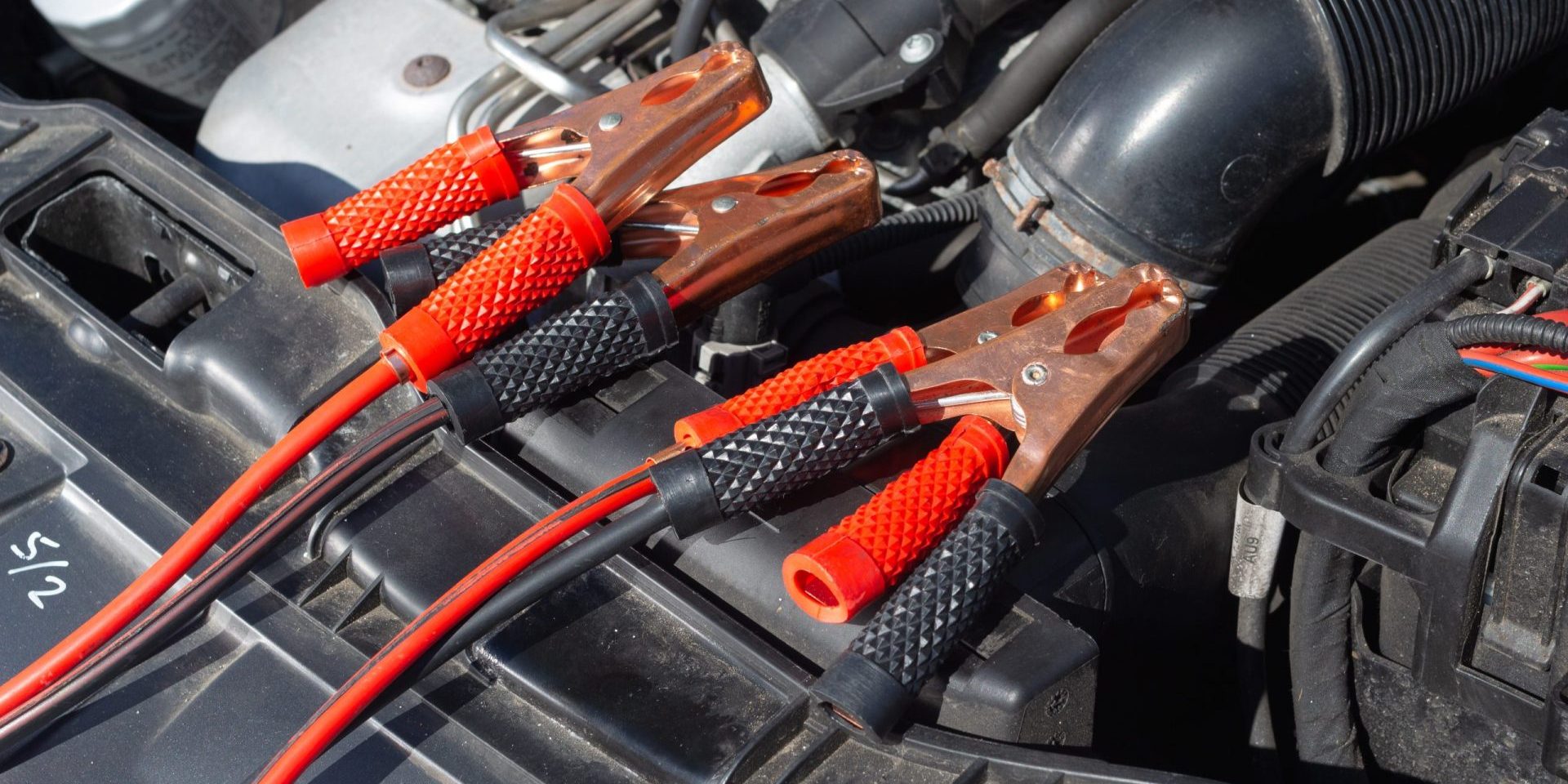How long to leave a car running to charge battery


To charge a car battery by running the engine, the time required depends on various factors, but the minimum time needed is at least 30 minutes. The age and condition of the battery, how much voltage is required to charge it fully and the duration for which the car should be left running. These factors will determine how long your car needs to be run to recharge your battery.
Running a car for 30 minutes to an hour should be enough time for a healthy battery to recharge or almost replenish its energy reserves. However, if you need your battery recharged completely and it’s old or low on health, then leaving it running longer may be necessary.
It’s important to note that while this method of charging can help during emergencies or when there is no other means available, regularly charging using a dedicated charger or ensuring your alternator is functioning properly is more effective.
To avoid harming further damage, turn off all accessories including any lights or air conditioning before expecting the vehicle for extended periods. If possible avoid unnecessary idling as this will drain power from other areas that could potentially lead to more severe problems down the line. If unsure whether this method could make things worse or create an avoidable problem have your area towed or reach out to professionals in the field who understand how best to work with specific makes and models of vehicles.
Buckle up for a shocking ride as we explore the electric factors that charge up your battery.
Factors affecting the time required to charge the battery
To better understand the factors affecting the time required to charge a car battery, let’s dive into the topic of the Factors affecting the time required to charge the battery. These sub-sections – Battery capacity, Alternator capacity, Engine load, and Driving conditions, will help you identify solutions for shorter or longer charging times, depending on the conditions of your car and your driving habits.
Battery capacity
Battery storage capacity plays a crucial role in charging time. Batteries with higher capacity take longer to charge but can hold more energy, whereas those with lower capacity require less time to charge and have lesser energy storage capabilities. A battery’s charge rate is typically measured as C-rate, where one C-rate represents the current needed to fully charge the battery in an hour.
A table illustrating battery charging time for different capacities is given below:
| Battery Capacity | Charging Time |
|---|---|
| 1000mAh | 1 hour |
| 2000mAh | 2 hours |
| 3000mAh | 3 hours |
It is essential to note that the above-mentioned data is approximate and may vary depending on various factors, including the charger’s quality, voltage output, and current rating.
When using fast charging methods or wireless chargers, the battery’s temperature can also affect its charging speed. Higher temperatures can shorten overall charging time but can reduce the battery lifespan over time due to higher wear and tear.
I recall a situation when my phone’s battery got drained while I was away from home. I had limited time to recharge it before leaving for an important meeting. However, I noticed that my phone took much longer than usual to be fully charged because of its larger battery capacity. This incident made me realize the crucial role played by battery capacity in determining charging times.
Alternator capacity
Alternator power output is a crucial factor when it comes to charging a battery. It defines the amount of electrical energy produced by the alternator and affects the time required for a battery recharge.
For Alternator capacity, we can create a table that showcases different car models and the alternator capacity they come with. The following table shows the alternator capacity of different car models:
| Car Model | Alternator Capacity |
|---|---|
| Toyota Corolla | 100 amps |
| Honda Civic | 85 amps |
| Ford Mustang | 150 amps |
The table clearly indicates how various vehicle models have varying alternator capacities, which directly impacts the charging time for their battery units.
In addition to alternator capacity, other factors like driving habits, age of the battery and its condition also affect charging times. For example, frequent short trips or stop-and-go traffic result in less time for the battery to charge as compared to steady highway driving. Moreover, an old or damaged battery doesn’t hold charge as well as one that’s new and properly working.
Pro Tip: In cold weather conditions, using accessories like heated seats or defrosters increase electrical load on your car’s charging system and can prolong charging times.
Engine load
When it comes to the factors affecting the time required to charge a battery, one important aspect to consider is the burden on the motor. The more force is being exerted on the engine, the more power it consumes from the battery and ultimately leads to an increase in charging time.
To further elaborate, below is a practical example of how engine load affects battery charging:
| Motor Load | Charging Time (in hours) |
| No Load | 2 |
| Half Load | 4 |
| Full Load | 6 |
As you can see, when there is no load on the motor, it takes two hours to charge the battery. However, when half or full load is applied, the charging time significantly increases.
It’s worth noting that while engine load is a crucial factor affecting battery charging time, it’s not the only one. Other significant elements that impact charging include temperature and battery capacity.
One suggestion for reducing charging time by minimizing engine load involves monitoring your driving habits. Avoiding sudden acceleration and maintaining a steady speed can help reduce unnecessary pressure on your vehicle’s motor. Also, regularly maintaining your vehicle’s condition and performance can improve its overall efficiency and reduce charge times by lowering energy loss.
Driving conditions
The environment in which a vehicle operates can significantly impact the charging time of its battery. For example, hilly terrain or stop-and-go traffic places greater demands on the vehicle’s battery, leading to slower charging times. On the other hand, smooth and steady highway driving requires less from the battery and therefore results in faster charging times.
Additionally, weather conditions can also play a role in battery charging times. Extreme temperatures, such as high heat or cold winters, require more energy from the battery and decrease its overall lifespan. Consequently, this may lead to longer charge times due to decreased battery efficiency.
It is also important to note that certain driving behaviors impact battery performance and charging times. Aggressive acceleration and frequent braking decrease battery efficiency and result in slower charging times over time.
According to a study by the National Renewable Energy Laboratory, moderate driving conditions that involve speeds of 50 miles per hour or less result in optimal battery performance and quicker charging times compared to fast highway speeds.
Fact: According to Forbes, “One of the most significant trends expected to shape the EV market during 2021 is the race toward providing vehicles with ultra-fast charging capabilities.”
Recommended time to leave a car running to charge battery
To ensure your car battery is charged fully, you need to know the recommended time duration to leave it running. In this section about recommended time to leave a car running to charge battery, we will explore common time durations and calculations to determine time required. Find out which solution suits you better to get the most out of your car’s battery.
Common time duration
For optimal battery charging, the recommended time to leave a car running varies based on several factors. These include the type and size of battery, temperature, and the level of charge in the battery.
A table displaying common durations for leaving a car running to charge the battery shows that in 30 minutes, an average-sized car battery can recharge from 50% to 80%. After an hour of running, it can charge up to 90%, while two hours can fully charge almost all batteries.
There are unique details to consider when charging your car’s battery. For example, if it is extremely cold outside or if the vehicle’s alternator is faulty, you may need to run your engine for longer than usual. Additionally, if your car has an older or smaller-sized battery, it may not recharge effectively even after several hours of running.
To ensure maximum effectiveness when recharging your car’s battery, you can try disconnecting non-essential devices like radios or lights that are draining power during charging. Using a dedicated charger rather than relying solely on the vehicle’s alternator is also highly effective. Finally, regularly servicing your vehicle’s electrical system will minimize instances where you need to face dead batteries or other related issues.
Keep these suggestions in mind and use them as needed when recharging your car’s battery. Doing so will help maintain healthy functioning of both your vehicle’s electrical system and your pocketbook.
Calculations to determine time required
Determining the suitable time required for a running car to charge its battery is crucial. To make such calculations, one needs to consider several factors such as battery voltage and current rating, charging system voltage, and charging system specifications.
Here is a 3-step guide on how to calculate the time needed to charge a car battery while the engine runs:
- Obtain Battery Information: Know the cold cranking amp (CCA) rating and reserve capacity (RC) of your car’s battery. These values help determine how much energy percentage is left in your battery.
- Check Charging System Voltage: Measure the charging voltage of your alternator with a multimeter. This value gives you an idea about how quickly your battery will recharge when it’s running.
- Determine Time Required: Use online calculators or formulas based on data obtained in step one and two. Alternatively, you can divide RC by 10 if you’re planning on using an idle alternator’s power to avoid overcharging.
It’s also worth noting that turning off all electronic devices like headlights, radio, and air conditioning systems can reduce power consumption while recharging your car’s battery. However, do not turn off the engine while recharging since it may cause damage to your alternator.
To achieve maximum battery life span, avoid exceeding a full-charge cycle twice per week or leaving electrodes below 50%. Additionally, regularly service both the alternator and AC compressor if they are responsible for contributing power while driving.
Risks associated with overcharging a car battery
To avoid the risks associated with overcharging a car battery while trying to refill its energy, you need to know how long is too long. But even this information is not enough – you also need to be aware of the potential damages to the car and the safety risks involved. In this section on ‘Risks associated with overcharging a car battery’, we will explore the sub-sections of ‘Potential damages to the car’ and ‘Safety risks’ to help you take necessary precautions while charging your car battery.
Potential damages to the car
Overcharging your car battery can lead to a multitude of potential damages to your vehicle’s electrical system. Here are five key points to consider:
- Shortened lifespan: Overcharging can cause excess heat, which leads to damage and shortens the lifespan of the battery.
- Damage to electrical components: Overcharging can damage the alternator, voltage regulator, and other electrical components in your car.
- Acid leakage: Overcharging can cause acid leakage from the battery, which can result in corrosion of other parts of your vehicle.
- Fire hazard: Overcharging can generate hydrogen gas that is highly flammable, leading to a potential fire hazard in extreme situations.
- Electrical shock: In rare cases, overcharging can cause a release of electrolyte gas that poses an electrical shock hazard.
It’s also worth noting that overcharged batteries may not recharge properly and could leave you stranded with a dead battery when you need it most. Be aware of any signs or symptoms of an overcharged car battery, including bubbling sounds or melted battery terminals.
Stay Safe with Proper Battery Charging Techniques
To avoid these risks associated with overcharging your car battery, it is crucial to follow proper charging techniques. Invest in a quality charger that is compatible with the specific type and size of your vehicle’s battery. Always read and follow the manufacturer’s instructions on how long to charge and at what rates. Take immediate action if you notice any signs that your battery might be overcharged or overheating.
Don’t let a small mistake damage your vehicle or pose a safety risk—take care when charging your car’s battery.
Safety risks
Overcharging a car battery can result in dangerous risks to personal safety. This includes the potential risk of the battery exploding due to excess pressure and hydrogen gas buildup, leading to serious injury or property damage.
Moreover, overcharging can also cause the battery to leak acid which may damage other components in the vehicle and put the person handling the battery at risk of chemical burn.
It is important to note that these risks persist even if the battery appears to be functioning normally. Regular maintenance checks by a professional are recommended to prevent any possible overcharging or mishandling of batteries.
To avoid these serious safety risks, it is essential to follow manufacturer instructions for charging your car battery and use caution when handling it. Any signs of malfunctioning should be addressed immediately by a professional technician.
Don’t take any chances with your personal safety and make sure to properly maintain your car battery as suggested by experts in this field.
Alternatives to running a car to charge battery
To explore alternatives to running a car to charge battery with the help of a battery charger, jump-starting the battery, or using a solar panel charger are some possible solutions.
Using a battery charger
For efficient and eco-friendly charging of a battery, an alternative to running a car is the use of a charger.
Here’s a 4-step guide to using a battery charger effectively:
- Ensure that the voltage output by the charger matches your battery’s requirements.
- Connect the positive terminal of your battery with the red (positive) cable of the charger, while connecting the negative with black (negative).
- Switch on the AC supply and let it charge for about an hour.
- When fully charged, disconnect all connections in reverse order – first, remove the negative cable followed by positive.
It is essential to note that charging speeds may vary depending on factors like weather conditions and levels of battery depletion.
Furthermore, always follow safety guidelines such as wearing insulated gloves before working with AC power supplies.
Jump-starting the battery
When your battery is dead, you need to know how to revive it. Reviving a dead car battery is also known as “Boosting the Battery.”
Here is how you can boost the battery of your car:
- Turn off all extra power consuming devices such as Headlights and audio.
- Park the booster car next to the dead car
- Connect one end of the red cable clip to the positive terminal of the dead battery and then connect another end of this clip to the positive terminal on the booster battery.
- Now Join one end of black cable clip with negative terminal on booster car’s battery and then join the other end with an unpainted metal surface present near your dead vehicle’s engine. Preferably connect on Engine block or any large metal bracket.
If possible, avoid boosting cars when there are no people around since handling wires can pose some risks.
Jump-starting batteries are effective but should not be overused as they can wear out and potentially shorten a service life. It’s important to maintain your vehicle properly in order to avoid issues like this in the future.
In addition to jump-starting, try keeping a back-up Car Battery Charger at home. These chargers essentially send current into a degraded lead-acid cell, restoring them chemically through time until those cells are discharged again–typically several months after use. Keeping these accessories charged regularly will lend peace of mind during long commutes or road trips!
Using a solar panel charger
Harnessing the power of sunlight, an efficient and eco-friendly way to charge your battery is through a solar panel charger.
Here’s a 4-step guide on how to use a solar panel charger:
- Select an appropriate solar panel charger based on the electricity capacity required for charging your battery.
- Expose the solar panels directly or indirectly to the sun for maximum efficiency.
- Connect and configure all the necessary wires and plugs as per instructions given in the manual.
- Position the panel in a stable location where it will obtain constant sunlight throughout the charging process.
Interestingly, it is worth noting that some of these solar panel chargers are now powered by flexible bifacial (double-sided) technology, allowing for high energy yields regardless of its orientation towards the sun.
In fact, according to The National Renewable Energy Laboratory (NREL), flexible bifacial module technology has shown up to a 27% increase in energy yield over traditional mono-facial modules.
How long to leave a car running to charge battery – Key Takeaways
The length of time you need to leave your car running to charge the battery primarily depends on the vehicle’s battery health, age, and charging capacity. In addition, environmental factors such as temperature play a vital role in determining the charging rate. It is suggested that if you are trying to charge your battery through idling or leaving it running, ensure that it runs for at least 30 minutes for optimal performance and minimize the risk of discharging the alternator or causing damage.
It is important to note that while idle charging may help recharge depleted batteries, regular usage also plays an essential role in maintaining their health and prolonging lifespan. If possible, drive your car regularly and avoid prolonged periods of inactivity to keep your car’s battery healthy.
If you have been experiencing persistent issues with a dead battery or insufficient charging time, consider reaching out to a professional mechanic or dealership technician for guidance regarding replacement options or alternative solutions.
Optimizing your vehicle’s charging capacity by maintaining and keeping its components in good shape can significantly improve both its overall service life and fuel efficiency. Ensure that you keep up with proper maintenance routines such as battery checks or routine oil changes. Also, pay close attention to any warning signs that may indicate deficiencies in any key components like the alternator or starter motor and take prompt action accordingly.
By following these helpful tips, you can keep your car running smoothly and minimize any unnecessary disruptions due to inadequate power supply issues related to a damaged or discharged battery.
How long to leave a car running to charge battery – Frequently Asked Questions
Q: How long do I need to leave my car running to charge the battery?
A: It depends on the state of the battery, but generally 30 minutes of driving should charge it up.
Q: Can I charge my car battery by idling the engine?
A: Yes, idling the engine can charge the battery, but it takes longer than driving.
Q: How often should I leave my car running to charge the battery?
A: It’s best to drive your car regularly to keep the battery charged. If you don’t use your car often, it’s recommended to drive it for at least 30 minutes every few days to keep the battery charged.
Q: Is it bad to leave my car running for too long to charge the battery?
A: Yes, leaving your car running for an extended period of time to charge the battery can damage the engine and exhaust system.
Q: Does the battery charge faster if I rev the engine while idling?
A: No, revving the engine while idling does not lower the charging time. It can, however, damage the engine and exhaust system.
Q: How long will a battery last if I leave the car running?
A: It’s not recommended to leave the car running to charge the battery for more than an hour. Leaving your car running for an extended period of time can damage the engine and exhaust system, and it will not improve the battery’s lifespan.











[…] horsepower in electric vehicles will also be influenced by advancements in battery technology. As battery energy density increases and charging infrastructure becomes more widespread, electric cars will be able to deliver sustained […]
[…] short trips and frequent starting without adequate running time may not allow the battery to recharge fully. Drivers should be aware of signs that suggest a battery or alternator might be failing, such as […]
[…] cranking amps, the multimeter probes are connected to the battery terminals during the charging process; however, this should be done according to the multimeter manufacturer’s instructions to avoid […]